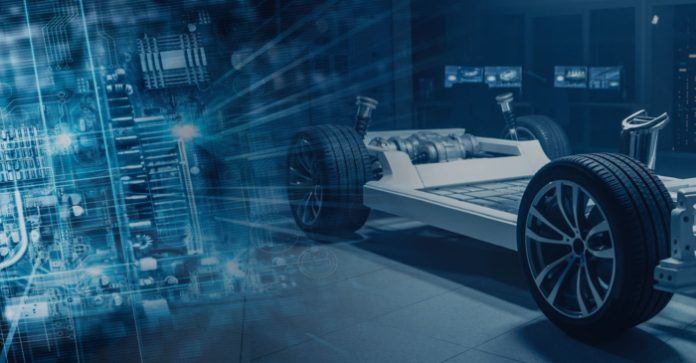Electric vehicles are taking the world by storm. IDTechEx predicts a 25% CAGR for the electric car market over the next decade, and growth for at least two decades in markets globally.
The emergence of electric vehicles erases the last century of automotive engineering as internal-combustion engines, with hundreds of moving parts, are giving way to an electric powertrain with typically under 20 moving parts.
The new focal points of innovation in electric powertrains are batteries, traction motors, and power electronics. The technological advancements for these components are driven by the need for improved vehicle range, safety, lifetime, and, of course, sustainable transportation.
The IDTechEx report ‘Power Electronics for Electric Vehicles’ focuses on the importance of automotive power electronics, analyzing the trends and underlying materials changes underway, alongside the massive opportunities being created throughout the value chain.
Automotive Power Electronics: Inverters, Onboard Chargers & DC-DC Converters
Power electronics is a type of solid-state electronics for controlling and converting power. For electric vehicles, it comprises three key devices: the onboard charger, an AC – DC rectifier to charge the battery; the inverter, a high-power DC to AC converter for the battery to power the traction motor; and a DC-DC converter for the high-voltage traction battery to power a low-voltage battery (for hotel facilities).
Most critical of all is the main inverter, which operates at the highest power and facilitates traction. Any efficiency improvements here improve vehicle range without altering the battery capacity.
This is driving a rapid transition from silicon IGBTs towards silicon carbide MOSFETs, led by Tesla, which, back in 2017 with the release of the Model 3, introduced the first automotive inverter with custom silicon carbide MOSFETs incorporating copper ribbon-bonding and silver-sintered die-attach pastes, sourced from STMicroelectronics.
Today, growth in the supply chain for silicon carbide MOSFETs continues to snowball, with players including ROHM Semiconductor, Cree, Denko, Infineon, Denso, Bosch, Delphi, Vitesco (Continental), Dana, and more, expanding production capacity and forming partnerships to keep up with the rapid demand. The report explores these supply chain dynamics, from semiconductor fabrication to inverter suppliers, and provides market shares using the IDTechEx cars model database as a basis.
For onboard chargers, the main trend is towards higher power operation. Here adoption of wide bandgap (WBG) switches is still important but less critical, as the OBC does not affect vehicle range. While onboard chargers under 4kW were the standard a decade ago, today most new models are arriving with 6 – 10kW OBCs, driven by battery capacity increases and the continuous demand for faster charging.
Higher-rated OBCs are also important because most public charging installations are AC, meaning the onboard charger often acts as a bottleneck for charging times. For example, a BMW i3 plugged into a 22kW AC charger will only charge at 11kW, because this is the capacity of its onboard charger.
Eventually, the endgame for OBCs is 22kW, which is currently the domain of luxury electric vehicles, with some exceptions like the Renault Zoe.
The report forecasts inverters, onboard chargers, and DC-DC converters in unit demand, GW, and market value ($ billion) with splits by power switch technology (SiC MOSFET, Si IGBT) and voltage level.
Silicon carbide MOSFETs, GaN HEMTs, and package material innovations
Today, silicon insulated-gate bipolar transistors (IGBTs) are dominant in automotive power electronics, but a rapid transition is underway to the sixth generation of wide bandgap semiconductors: silicon carbide (SiC) metal-oxide field-effect transistors (MOSFETs) and gallium nitride (GaN) high electron mobility transistors (HEMTs).
WBG semiconductors are a step-change, making power electronics devices vastly more efficient, power-dense, and capable of high-temperature operation. This will become crucial for improvements to either electric vehicle range or cost reduction (by downsizing battery capacity).
As the semiconductor dies are no longer the bottleneck for high-temperature operation and lifetime, new opportunities are created in the packaging materials. Novel silver-sintered pastes replacing conventional solders, copper wire, and ribbon bonds, and improved thermal management systems and materials will become necessary.
The report forecasts the uptake of wide-bandgap automotive power electronics through, 2032 and explores the resulting trends which we expect to see in the packaging materials.
800V – 1000V Cars
Wide-bandgap semiconductor switches are enabling more efficient high voltage operation (800V – 1000V), which brings advantages such as 350kW DC fast-charging. The move to 800V is not as simple as rewiring battery cells: deep system changes and redesigns to the cells, thermal management system, inverter (WBG), motor, and high voltage cabling is required.
Nonetheless, the situation is evolving rapidly, with at least ten automakers committed to models and vehicle platforms that will operate between 800 – 1000V, all with release timelines between 2021 – 2025.
800V will predominantly (but not exclusively) exist in the luxury segment for the next few years, which we define as a base model price starting above $50k. The move to 800V platforms does not necessarily guarantee the adoption of silicon carbide MOSFETs but is a strong driver for it. However, for platforms above 900V like the 924V Lucid Air, silicon carbide will be the only realistic option.








